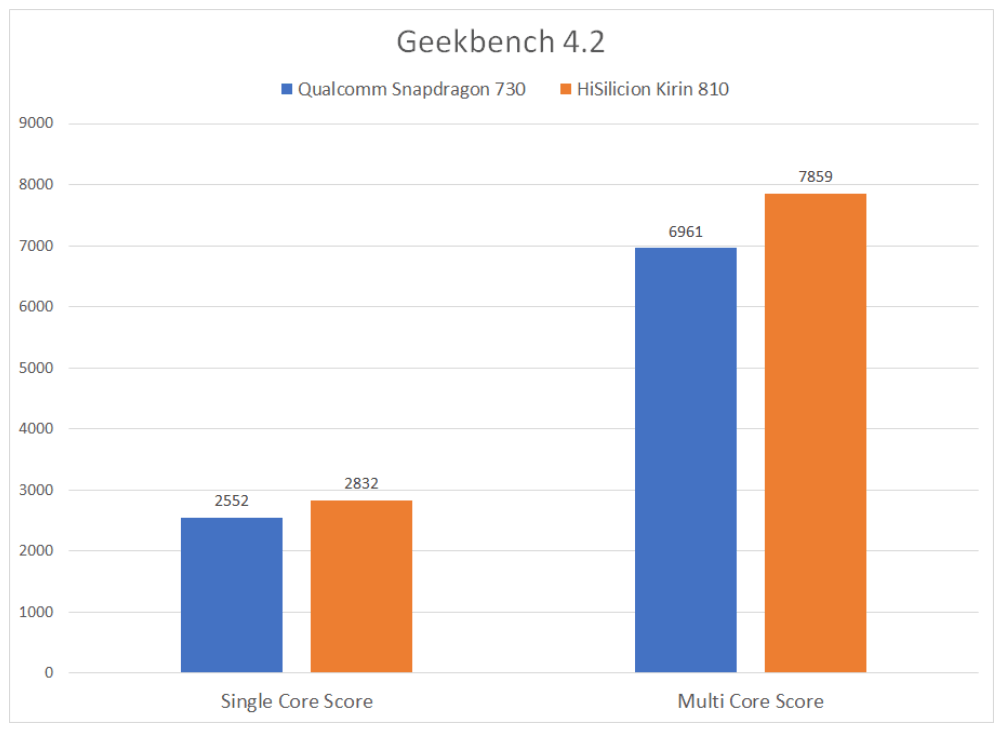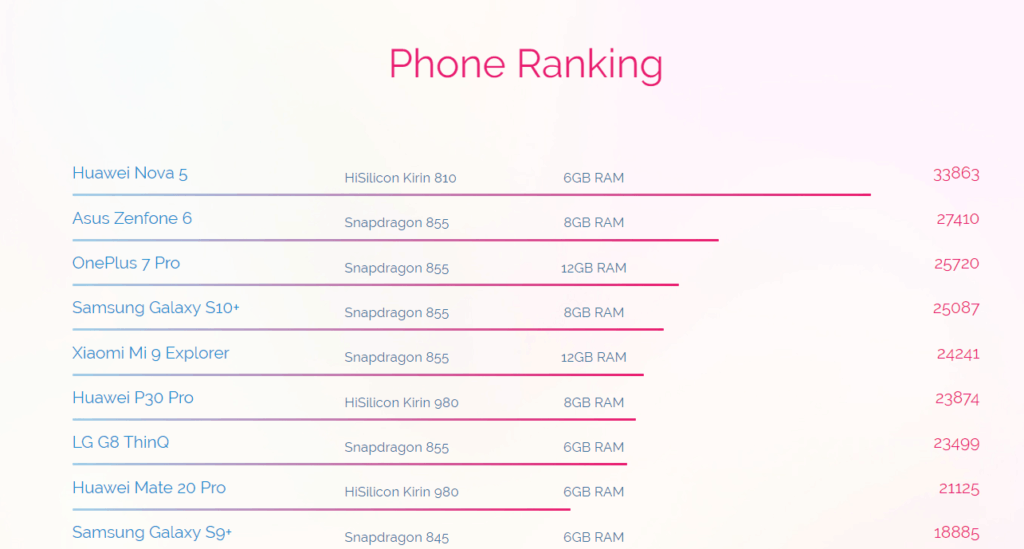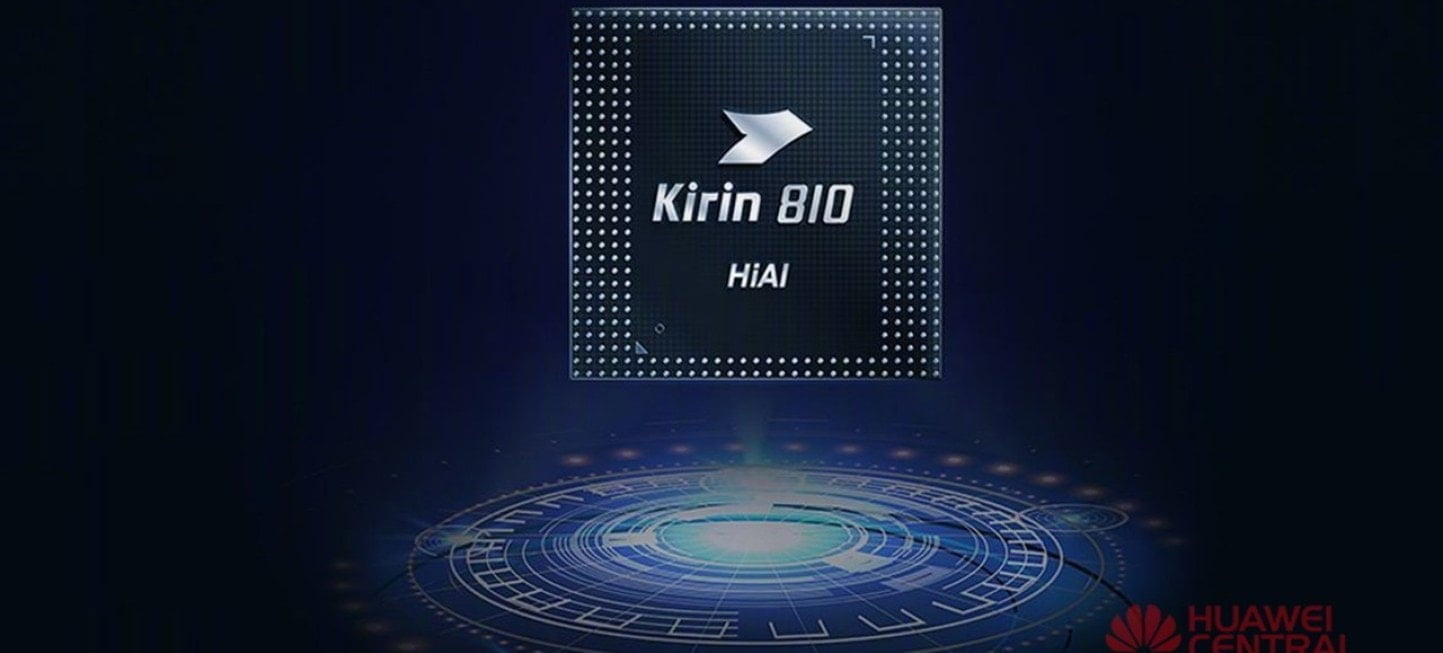Any links to online stores should be assumed to be affiliates. The company or PR agency provides all or most review samples. They have no control over my content, and I provide my honest opinion.
A few days ago Huawei owned HiSilicon launched the new Kirin 810 chipset which will target the upper midrange market and presumably act as a tier above the current HiSilicon 710.
The new chip fabricated on TSMC’s 7 nm process, features two Cortex-A76 big cores operating at up to 2.27 GHz along with six Cortex-A55 little cores operating at up to 1.88 GHz. The 810 incorporates ARM’s Mali-G52 MP6 GPU.
As with most modern chipsets, this will has a dedicated AI chip, or Neural Processor in Huawei’s terms. This is the first neural processing unit to use their own homegrown NPU based on Hisilicon’s Da Vinci architecture.
The first phone to feature this new chipset is the Huawei Nova 5 which is launching in the Chinese market and is expected to feature in the upcoming Honor 9X.
Huawei are positioning this chip as a competitor to the recently launched Snapdragon 730 which is featured on the Samsung A80 and the Redmi K20.
The Snapdragon 730 is manufactured on an 8nm process, which is an improvement over its predecessor, the Qualcomm Snapdragon 710‘s 10nm process. The setup within the SoC comprises of 2 semi-custom Kryo 470 Gold “performance” cores clocked at 2.2GHz along with 6 semi-custom Kryo 470 Silver “efficiency” cores clocked at 1.8GHz. The GPU on the SoC is the Adreno 618, and the SoC also comes in with the Hexagon 688 DSP and the Hexagon Tensor Accelerator for AI acceleration.
Specification Comparison
| Snapdragon 710 | Snapdragon 730 | HiSilicon Kirin 710 | HiSilicon Kirin 810 | |
|---|---|---|---|---|
| Process | 10nm LPP | 8nm | 12 nm | 7nm |
| CPU Cores | Octa-Core, 64-bit | Octa-Core, 64-bit | Octa-Core, 64-bit | Octa-Core, 64-bit |
| CPU | 2x Kryo 360 (CA75) @ 2.2GHz 6x Kryo 360 (CA55) @ 1.7GHz | 2x Kryo 470 Gold @2.2GHz 6x Kryo 470 Silver @1.8GHz | 4x Cortex-A73 @ 2.2 GHz 4x Cortex-A53 @ 1.7 GHz | 2x Cortex-A76 @2.27GHz 6x Cortex-A55 @1.55GHz |
| GPU | Adreno 616 | Adreno 618 | ARM Mali-G51 MP4 | Mali-G52 MP6 |
Benchmarks
Huawei has released their own benchmarks of the new chipset, so at the moment we will have to take their word for the accuracy. All the benchmarks are in comparison to the SD730, all of which indicate superior performance to the Qualcomm chip.
In Geekbench single-core performance on the Kirin 810 is said to be marginally better with about 11% improvement over the Snapdragon 730, in the multi-core comparison, the gap grows slightly by 13% in favour of the HiSilicon Kirin 810.

with AnTuTu, with the Kirin 810 is compared against both the SD730 and the Kirn 710 besting both chips comfortably.
The GPU performance on the Kirin 810 gives it a significant 26% edge over its Snapdragon counterpart, which coupled with the stronger multi-threaded performance, will help you out in gaming scenarios. Compared to the Kirin 710 you are looking at over 2.5 times performance improvement in the GPU.
In the CPU department, the Kirin 810 is still ahead of the SD930 but only by about 6% while it is 49% higher than the Kirin 710.

Overall scores in Antutu show a lead of 13% and 70% over the Snapdragon 730 and Kirin 710 respectively.
According to their internal testing using the AI Benchmark developed by Andrey Ignatov as the basis for comparison, Huawei claims that the Kirin 810 NPU performs much better than even the flagship Qualcomm Snapdragon 855 within the context of AI performance.

The above table is a good example of the tit for tat performance between HiSilicon and Qualcomm. The Kirin 980 was launch first, claiming huge improvements compared to the previous generation SD845, but now the SD855 shows improved AI performance over the Kirin 980. Similarly, the SD730 was launched first, now the Kirin 810 is ousting that.
Because of this, I wouldn’t stress about which chipset manufacturer you phone uses but make your choice based on how the chip is positioned within the market and how well it performs based on its price.
Full Specification
| Kirin 810 | |
|---|---|
| Base Frequency | 2,270 MHz (2.27 GHz, 2,270,000 kHz) and 1,880 MHz (1.88 GHz, 1,880,000 kHz) |
| Core Count | 8 |
| Core Name | Cortex-A76 and Cortex-A55 |
| Designer | HiSilicon and ARM Holdings |
| Family | Kirin |
| First Announced | June 21, 2019 |
| Full Page Name | hisilicon/kirin/810 |
| Instance Of | microprocessor |
| Integrated Gpu | Mali-G52 |
| Integrated Gpu Base Frequency | 850 MHz (0.85 GHz, 850,000 KHz) |
| Integrated Gpu Designer | ARM Holdings |
| Isa | ARMv8 |
| Isa Family | ARM |
| L1$ Size | 0.25 MiB (256 KiB, 262,144 B, 2.441406e-4 GiB) + and 0.375 MiB (384 KiB, 393,216 B, 3.662109e-4 GiB) |
| L1d$ Size | 0.125 MiB (128 KiB, 131,072 B, 1.220703e-4 GiB) + and 0.188 MiB (192 KiB, 196,608 B, 1.831055e-4 GiB) |
| L1i$ Size | 0.125 MiB (128 KiB, 131,072 B, 1.220703e-4 GiB) + and 0.188 MiB (192 KiB, 196,608 B, 1.831055e-4 GiB) |
| L2$ Size | 1 MiB (1,024 KiB, 1,048,576 B, 9.765625e-4 GiB) + and 0.75 MiB (768 KiB, 786,432 B, 7.324219e-4 GiB) |
| Manufacturer | TSMC |
| Max Cpu Count | 1 |
| Max Memory Channels | 4 |
| Microarchitecture | Cortex-A76 and Cortex-A55 |
| Model Number | 810 |
| Name | Kirin 810 |
| Process | 7 nm (0.007 μm, 7.0e-6 mm) |
| Series | 800 |
| Supported Memory Type | LPDDR4X-4266 |
| Technology | CMOS |
| Thread Count | 8 |
| Used By | Huawei Nova 5 |
I am James, a UK-based tech enthusiast and the Editor and Owner of Mighty Gadget, which I’ve proudly run since 2007. Passionate about all things technology, my expertise spans from computers and networking to mobile, wearables, and smart home devices.
As a fitness fanatic who loves running and cycling, I also have a keen interest in fitness-related technology, and I take every opportunity to cover this niche on my blog. My diverse interests allow me to bring a unique perspective to tech blogging, merging lifestyle, fitness, and the latest tech trends.
In my academic pursuits, I earned a BSc in Information Systems Design from UCLAN, before advancing my learning with a Master’s Degree in Computing. This advanced study also included Cisco CCNA accreditation, further demonstrating my commitment to understanding and staying ahead of the technology curve.
I’m proud to share that Vuelio has consistently ranked Mighty Gadget as one of the top technology blogs in the UK. With my dedication to technology and drive to share my insights, I aim to continue providing my readers with engaging and informative content.






